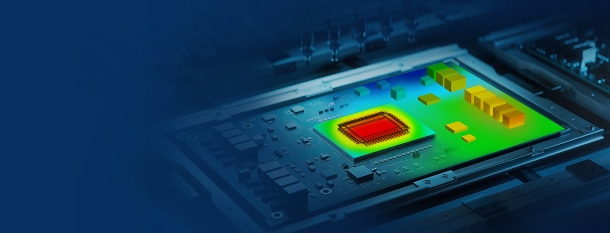Demand Background
With the rapid development of the electronic information industry, electronic devices are gradually evolving towards portability and high integration, which increases the challenges for heat management because the internal heat flux density and heat flow within these devices are increasing. For example, workstations, which undergo continuous and high-intensity workloads, require high-level chipsets and high-performance multi-core processors, demanding superior machine stability. Thus, the arrangement of heat sources and heat dissipation design inside the chassis becomes crucial because temperature greatly affects the performance of electronic components.
Solution
Simulation-assisted thermal design is the most effective approach to address heat management for electronic devices. IBE has developed an Simdroid Electronic Cooling module for heat dissipation in electronic components and devices. This module features a professional component model library for electronic products, which enables users to create geometric models using a “building-block” approach rapidly. Additionally, it facilitates the automatic generation of high-quality orthogonal hexahedral meshes, supports fluid-thermal coupling, and delivers highly accurate simulation results.
The simulation of “HP Z8 G4” workstation has been done with the Simdroid Electronic Cooling module to analyze the internal heat dissipation conditions during operations.
- Geometric Modeling: The internal chassis model is simplified to save computational resources. Only critical heat sources and components that substantially impact heat dissipation are retained, such as circuit boards, chips, heat sinks, and cooling fans. Additionally, the design of flow diversion layers on the chassis cover that affect airflow is preserved, and replacing the heat dissipation grilles on the chassis with porous plates.

- Meshing: The module supports the automatic generation of hexahedral meshes and provides the capability for local mesh refinement, enabling users to obtain suitable meshes promptly.
- Calculation, Solution, and Postprocessing: The module adopts the finite volume method, supports fluid-thermal coupling, and includes functionalities for solving laminar and turbulent flows. It allows for both steady-state and transient flow heat transfer analysis. In this case, the simulation employs the turbulence model, gravity considered, and selects steady-state analysis. Additionally, the temperature of the primary heat source, namely the CPU center inside the chassis, is monitored during the calculation to determine simulation convergence. The simulation results demonstrate that the heat dissipation channel layout within the chassis is reasonable, offering high heat dissipation efficiency while maintaining the CPU temperature within an acceptable range.

Future Applications
With the Simdroid Electronic Cooling module, the comprehensive thermal simulation and analysis for electronic products can be conducted at various scales, ranging from component-level, PCB board and module-level, system-level to environmental-level analyses. Meanwhile, it also finds extensive applications in industrial sectors such as communication equipment, electronic products, semiconductor products and equipment, automotive, aerospace, and more.











